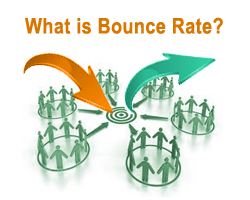 Understanding What a Bounce Rate Is All About
Understanding What a Bounce Rate Is All About
If you have been a website owner for some time now, you would have definitely heard of the ‘Bounce Rate‘ metric in Google analytics. But for those who aren’t very familiar, let me simply put it as a number that states how many of your visitors are ‘bouncing away’ immediately after visiting your site, without indulging in the other things and pages that your site has to offer. As an example, if they visit just one page and leave before visiting another page on your site, it can be termed as a viewer is bouncing away.
It is usually denoted in terms of a percentage of visitors that are bouncing away after landing on the site without further exploring the site. Now there are various reasons which can cause the occurrence of such a situation. It could be because the visitor simply hit the ‘Back‘ button on his browser or he closed his browser altogether. Sometimes the visitor may have clicked on one of your ads which led him to a different location and he may not come back to your site at all. Many a times the visitor may click on one of your external links or use the search box on his browser and leave your site. Also more than often, many visitors simply type a new URL on their browser and instantly leave your site.
These are the main causes that would be included while calculating the bounce rate of a site. Let me share the formula for calculating the bounce rate of your site, so that you can analyze your own website’s performance.
The Website’s Bounce rate = Visits that left after viewing one page / Total number of visits
Now one thing that I must make very clear is that this bounce rate will only be counted if the visitor leaves your site immediately without exploring another facet of your site or simply put, if he or she doesn’t visit a second page on your website. Because if they do, then it won’t be deemed as bouncing away, since they are spending their time to understand your site and the things it had to offer, which is definitely a good thing.
Let me give you an example to help you understand and use the formula a little better. If during a particular month your site receives say 100,000 visits, out of which 60,000 bounced away after visiting just the first page of your website, your bounce rate for that particular time period would be 60,000 divided by 100,000, which equals to 0.6 or in terms of percentage it is 66%. Once you understand the basic concept of calculating the bounce rate, you can apply it to either a single page or your whole website depending upon your requirement.
A web analytics program like Google Analytics will help you gain an exact idea of your bounce rate. Now a bounce rate for a new website could be a little misleading since it has just started, but in time you will understand how to analyze it as well.
So how can you analyze whether your bounce rate is good or no? Well, if it is on the lower side, your website is obviously better because it shows that visitors are intrigued by your site. It could mean that your site’s content and design is attractive and interesting, thereby making the visitors explore the site. Engaging them and maintaining their interest for a considerable amount of time requires both creativity and determination.












